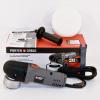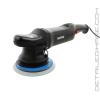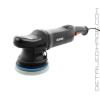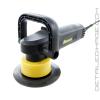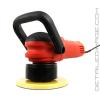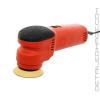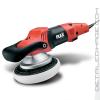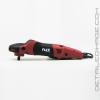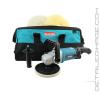Overview
Polishing is the step in the detailing process that yields the most dramatic difference in your paint's appearance. The objective of polishing is to remove imperfections in the clear coat that cause the paint to look dull. Surface imperfections can include swirls, scratches, water spots, etchings, industrial fallout, oxidation, etc. These surface imperfections cause light to fragment instead of passing directly through the clear coat yielding less gloss and depth. When these imperfections are removed, you will reveal the true potential of your vehicle's paint.
A swirl mark is a very thin and shallow scratch on the surface of your paint, that often comes from washing and drying improperly. Waxes, sealants and most glazes will not permanently remove these surface imperfections at best they will hide them temporarily. To eliminate these imperfections safely and permanently you want to polish the surface starting with a less aggressive polish and using more aggressive polishes as needed. The chemical polishing agents and/or the polishing particles will safely remove the extremely fine imperfections.
Frequency
We recommend only polishing as needed, which is typically around one to two times per year during a full detail. After a thorough multiple step polishing process has been completed you can maintain the finish properly using the correct washing and drying products and techniques. Keeping the paint in good condition will ensure it needs less frequent polishing.
Why Use a Buffer?
While you can polish by hand, it is highly recommended to use a quality buffer for maximum results. When you remove imperfections in your paint, you are working in polishing particles thoroughly and evenly. To do this by hand, you need to use a fair amount of pressure while moving the pad rather quickly. To put it in perspective, the standard in the industry for buffers is the Porter Cable 7424 XP. This buffer can generate 6,800 oscillations per minute at full speed very safely and effectively. Imagine trying to move your arm 6,800 times per minute for hours on end, all while exerting 10 - 15 lbs of pressure on the applicator pad. It's impossible to duplicate by hand and it can be tiresome to do a small fraction of this work by hand.
Another main advantage of a buffer is its ability to work with various pads that help increase the polishing power. For example a blue pad is extremely soft so it's used for extremely fine polishes, but if you use an orange pad it's more dense and can work in a medium cutting polish extremely well. Best of all these pads all use the same hook and loop backing so you simply slap them on and pull them off with ease and no tools are needed. Below we will outline some of the most popular buffers for detailers and what pads and polishes they work great with. There is no one best buffer and there is no one best combination of pad and polishes, however our recommendations come from years of experience and consistently yield excellent results.
To see a comparison of the technical specifications between buffers please check out our Buffer Comparison Chart below.
Buffer Comparison Chart
| Buffer | Type | Speed Dial | Comes With | Specifications | Compatible Backing Plates & Pads |
| Porter Cable 7424XP | Random orbital |
|
|
|
|
| Rupes LHR 21ES 21MM | Random orbital | 1,700 R.P.M. - 4,200 R.P.M. | Built in 6" backing plate |
|
|
| Rupes LHR 15ES 15MM | Random orbital | 1,700 R.P.M - 4,800 R.P.M. | Built in 5" backing plate |
|
|
| Meguiar's G110v2 | Random orbital |
|
|
|
|
| Griot's Garage 6" 3rd Gen. | Random orbital |
| 6" DA backing plate included |
|
|
| Griot's Garage 3" | Random orbital | 3,500 to 10,000 OPM's | 3" DA backing plate included |
|
|
| Flex XC 3401 VRG | Forced random orbital |
|
|
|
|
| Flex PE 14-2 150 | Rotary | 600 - 2100 RPMs | Side handle included |
|
|
| Makita 9227C-X3 | Rotary |
|
|
|
|
Porter Cable 7424
The Porter Cable 7424 XP (PC 7424 XP) is often referred to as the standard in the auto detailing industry. We've yet to come across a buffer at a lower price point that has enough power to effectively work in polishes like the Porter Cable 7424 XP can. This is one of the main reasons why the PC 7424XP is our best selling buffer.
The PC 7424XP is great for both experienced professionals and first time users. The first benefit many detailers notice is the lower price point which makes it affordable to just about all. It is also incredibly easy and safe to use so brand new users can expect excellent results with their first detail. The PC 7424 XP is a random orbital buffer, which means it oscillates rather than spins. This helps reduce the amount of heat generated on the paint and is very safe to use. Even at full speed, the risk of damaging your paint is virtually zero.
Pros:- Low cost compared to other quality buffers on the market
- Very safe to use at any speed
- Easy to control and maneuver
- Can be used with almost any hook and loop pad
- Can not remove some scratches and deeper imperfections
- Backing plate not included
